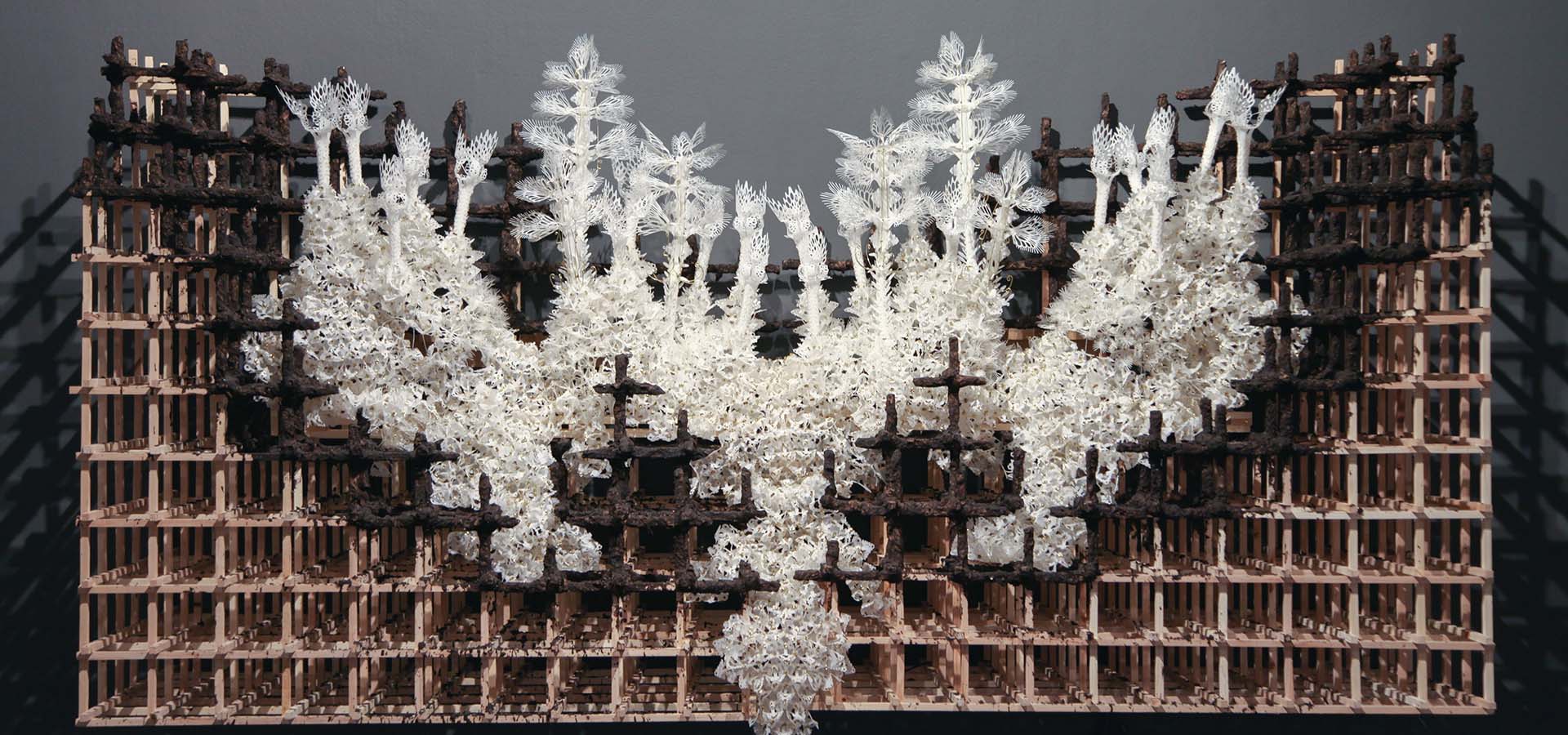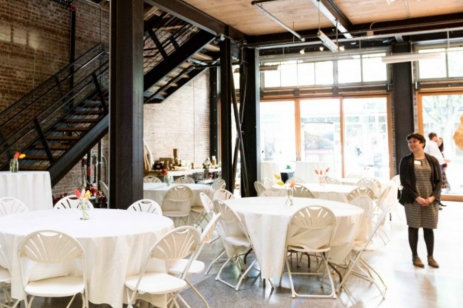In Parable of Gravity, Seattle-based artist Casey Curran combines elements of mythology, science, and religion to foster a conversation around humanity’s goals and visions for future on earth.
The installation consists of several large sculptural elements, including a suspended aluminum asteroid, a rectilinear formation of 20 scaffolded wooden towers, and an otherworldly kinetic garden that appears to be taking over and growing out of the work.
The wooden towers stand as a symbol of continually evolving human technological progress. Occupying the floor of the studio and standing up to eight feet tall, they are structured to allow visitors to weave through and immerse themselves in their gridded pattern. In the center, a human-scaled figure emerges. This being is made of kinetic flora that grows up and out of a pulsing and flexing garden, which reclaims its supportive wooden structure. The aluminum asteroid, titled Anchor of Janus, takes its name from the Roman god Janus and its form from asteroid 951Gaspra, which extraordinarily was captured by photograph on the Galileo spacecraft in 1991.
This exhibition is a parable of a landscape in transition: a decomposing environment that nurses the new life it brings forth. It is a display of both decay and growth, referencing the unstoppable momentum of significant human innovations that are capable of shifting our cultural paradigm. The unforeseen costs of rapid advancements in the last 200 years leave us looking toward a future that seems to crumble all around us. At this moment, we have a chance to save what we haven’t lost and leave our legacy for the generations that follow.


